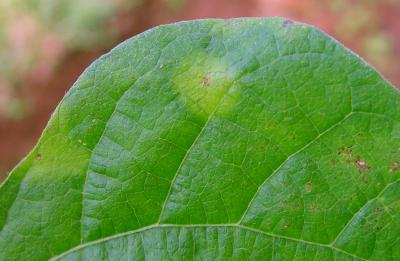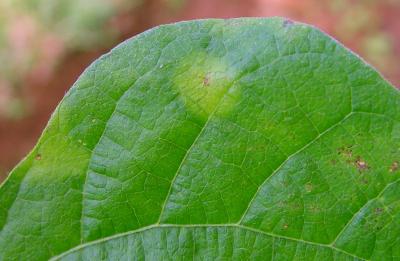

Halo blight (Pseudomonas syringae pv. phaseolicola)
The most characteristic halo blight symptoms occur on bean foliage. Initially, small water-soaked spots resembling pin pricks appear on the lower leaf surface. These spots turn brown in a few days, and the surrounding tissue gradually become yellow-green. This zone of yellowed tissue around the spot resembles a halo, hence the name of the disease. Pod lesions first appear as small water-soaked pin pricks on the pod surface. These lesions gradually enlarge to form dark sunken spots of various sizes. A whitish bacterial ooze appears on the spots when wet.
Halos do not develop around pod lesions. Pod lesions are especially important to the French bean industry because they make the bean pod unacceptable to fresh market and processors. On dry beans, pod lesions are of less importance because the beans are shelled before marketing. When infected seed is used, the primary leaves of seedlings show interveinal chlorosis, suggestive of mosaic virus infection.
- Use certified disease-free seed.
- Plant resistant varieties (e.g. French bean variety 'Paulista').
- Practise a 2-3 year crop rotation without legumes.
- Plough under bean debris after harvest.
- Do not work in bean fields when the plants are wet.
- If blight is observed on scattered plants, spot application of copper hydroxide could be considered.
